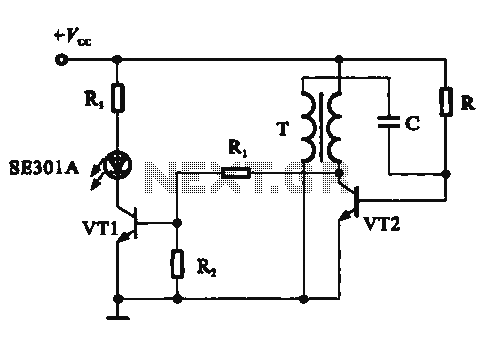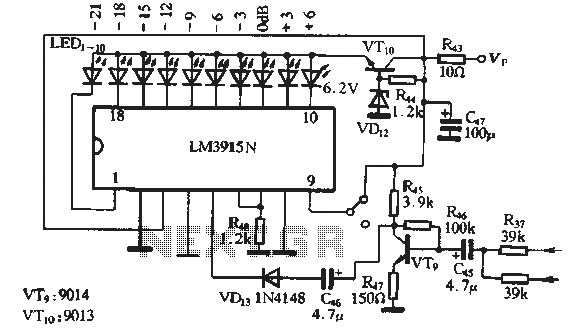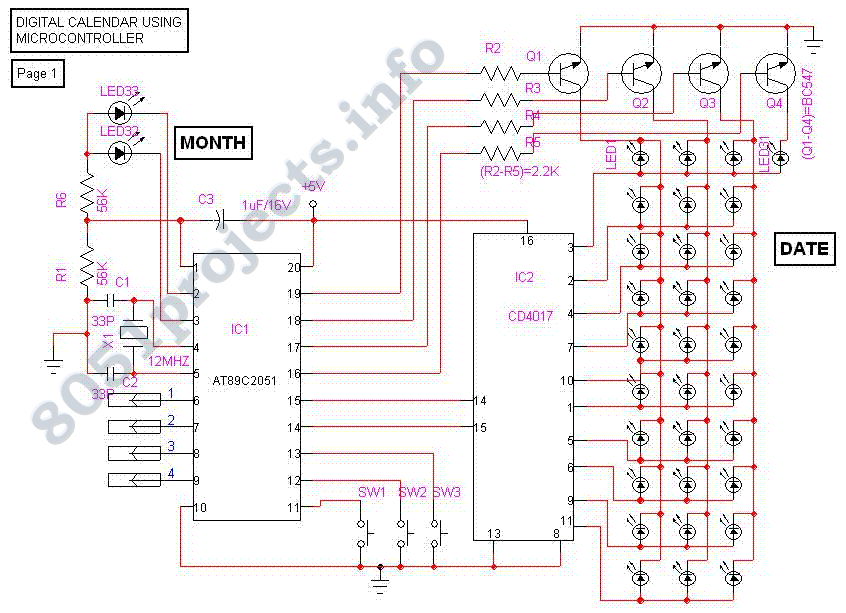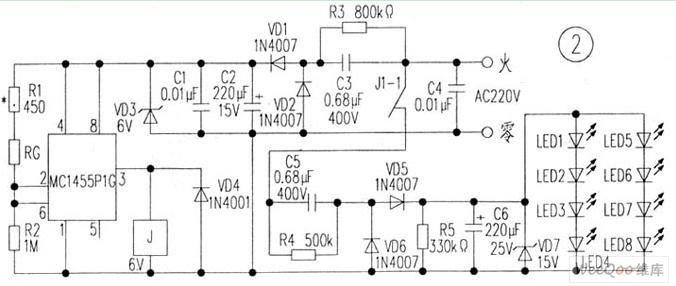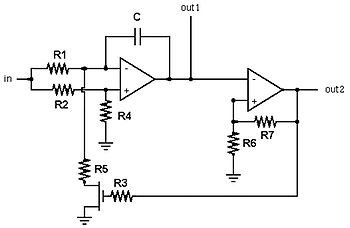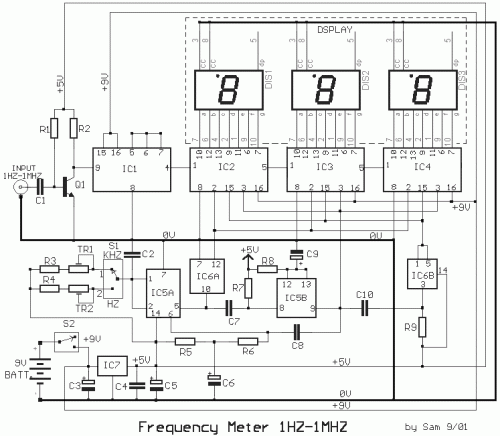
7 segment LED display
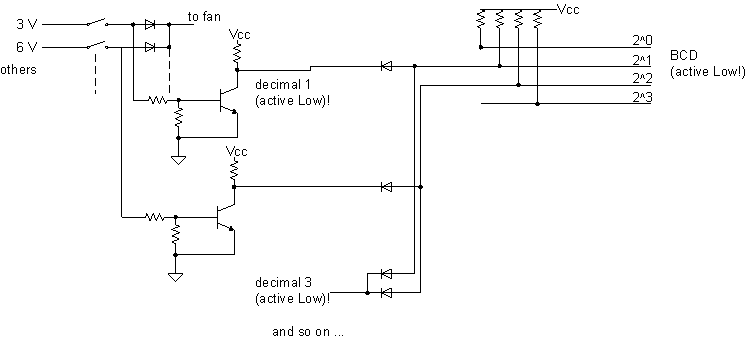
A 4511 integrated circuit (IC) has been utilized to display numbers 1-9 on a seven-segment LED display. The objective is to explore methods to extend this functionality to display additional numbers.
The CD4511 is a BCD to 7-segment latch decoder/driver that can drive a common cathode 7-segment display. It accepts a binary-coded decimal (BCD) input and converts it to the corresponding output that lights up the segments of the display. The device has four data inputs (A, B, C, D) for the BCD value and outputs for each of the seven segments (a through g).
To implement this circuit, the following components are required:
1. **CD4511 IC**: This will serve as the core of the circuit, decoding the BCD input into the correct segment outputs.
2. **Seven-segment display**: A common cathode display is preferred for easier interfacing with the CD4511.
3. **Resistors**: Current-limiting resistors are needed for each segment output to prevent excessive current flow through the LEDs of the display.
4. **Power Supply**: Typically, a 5V supply is used for the IC and display.
5. **Input switches or a microcontroller**: To provide the BCD input to the 4511 IC, either manual switches can be used or a microcontroller can be programmed to output the desired BCD values.
The circuit can be designed by connecting the outputs of the CD4511 to the corresponding segments of the seven-segment display. Each segment (a-g) will be connected through a resistor to limit current, ensuring that the display operates within its specifications. The BCD inputs can be connected to switches that allow for manual input of the numbers 0-9 or can be driven by a microcontroller for automated control.
For example, to display the number '5', the BCD input would be set to '0101'. The CD4511 would decode this input and activate the segments a, b, c, e, f, and g, resulting in the illumination of the appropriate segments to form the number '5' on the display.
In summary, the CD4511 IC provides a straightforward method to control a seven-segment display, allowing for the display of decimal numbers through simple BCD inputs. This setup can be expanded further by incorporating additional logic or components to enable more complex functionality, such as displaying larger numbers or integrating with other systems.I have successfully used a 4511 IC to make numbers 1-9 appear on a 7 segment led display, cool. Now how can I use this to say have it display a number .. 🔗 External reference
The CD4511 is a BCD to 7-segment latch decoder/driver that can drive a common cathode 7-segment display. It accepts a binary-coded decimal (BCD) input and converts it to the corresponding output that lights up the segments of the display. The device has four data inputs (A, B, C, D) for the BCD value and outputs for each of the seven segments (a through g).
To implement this circuit, the following components are required:
1. **CD4511 IC**: This will serve as the core of the circuit, decoding the BCD input into the correct segment outputs.
2. **Seven-segment display**: A common cathode display is preferred for easier interfacing with the CD4511.
3. **Resistors**: Current-limiting resistors are needed for each segment output to prevent excessive current flow through the LEDs of the display.
4. **Power Supply**: Typically, a 5V supply is used for the IC and display.
5. **Input switches or a microcontroller**: To provide the BCD input to the 4511 IC, either manual switches can be used or a microcontroller can be programmed to output the desired BCD values.
The circuit can be designed by connecting the outputs of the CD4511 to the corresponding segments of the seven-segment display. Each segment (a-g) will be connected through a resistor to limit current, ensuring that the display operates within its specifications. The BCD inputs can be connected to switches that allow for manual input of the numbers 0-9 or can be driven by a microcontroller for automated control.
For example, to display the number '5', the BCD input would be set to '0101'. The CD4511 would decode this input and activate the segments a, b, c, e, f, and g, resulting in the illumination of the appropriate segments to form the number '5' on the display.
In summary, the CD4511 IC provides a straightforward method to control a seven-segment display, allowing for the display of decimal numbers through simple BCD inputs. This setup can be expanded further by incorporating additional logic or components to enable more complex functionality, such as displaying larger numbers or integrating with other systems.I have successfully used a 4511 IC to make numbers 1-9 appear on a 7 segment led display, cool. Now how can I use this to say have it display a number .. 🔗 External reference
